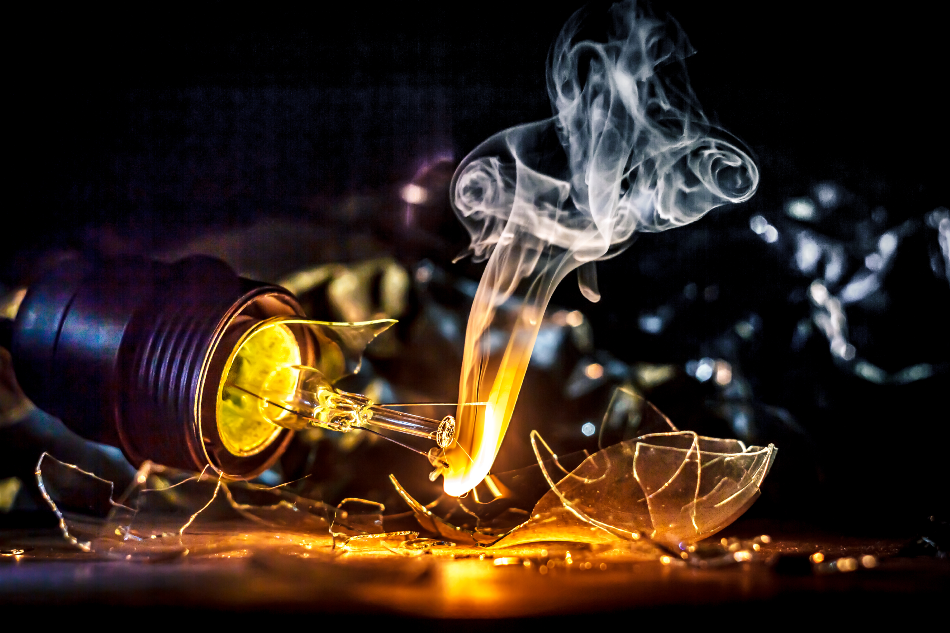Feb 16 2002

Anton Kishinskiy / Shutterstock
Among metals, osmium has the maximum optical emission rate. Consequently, after Edison’s carbon filaments, osmium was used at the beginning of the lamp sector. The main drawback of this metal is its high vapor pressure that results in a short lamp life.
Compared to osmium, tungsten can endure significantly higher temperatures and has a very low vapor pressure. This results in more luminosity and an extended lifetime.
Wire Properties
The properties of tungsten wire have provided it with a unique place in the origin and growth of the lamp sector. The lamp sector signifies the largest commercial application of tungsten wire. It is used in this application, as it exhibits superior creep resistance at higher temperatures. Tungsten is an appealing lamp filament material, as it has a very high melting temperature (~3680 K) and a low vapor pressure at elevated temperatures.
Tungsten is also naturally brittle and, at first, this prevented the production of tungsten wire. However, at the start of this century, William Coolidge, working at the General Electric company, followed the idea of deforming tungsten at higher temperatures so as to create small-diameter tungsten wire.
Two key findings of Coolidge’s work were, first, to formulate a technique to work a powder metallurgy ingot down to the wire by using deformation at very high temperatures; and, second, to create a ductile material from this deformation. Today, the capacity to handle tungsten wire and coil filaments without breakage is the mainstay of the entire incandescent lamp sector.
Processing
The preliminary stages of thermomechanical processing of sintered tungsten ingot are typically carried out by rolling and/or swaging. These operations enable large deformations at comparatively high temperatures, and during the preliminary stages of deformation, the ingot realizes full density. By working the tungsten at higher temperatures, it is kept well above the ductile-to-brittle transition temperature but below the recrystallization temperature.
Anneals should be applied at different points during this deformation, else tungsten will become overworked and start to fracture. Finally, wire drawing is used to decrease the tungsten to its final preferred diameter. At this juncture, the microstructure contains fibers that have very high aspect ratios: they serve like fibers in a rope and offer bend ductility.
It was not until the entry of transmission electron microscopy that potassium was found in the small bubbles in tungsten. It is these potassium bubbles that offer the wire its exceptional high temperature creep resistance. Potassium is essentially insoluble in tungsten. The bubbles are first developed from the doped powder in the ingot, during the sintering process.
During thermomechanical processing, the initial bubbles are collected in tubes. Upon annealing the wire, these tubes break up to develop rows of bubbles.
After wire drawing is done, the tungsten can be coiled into a filament and recrystallized. When the wire is recrystallized, the grain boundaries interact with the rows of potassium bubbles as the boundaries shift, thus leading to an interlocking grain structure.
“Bamboo” Structure
Recrystallized pure tungsten wire develops a bamboo structure: the grains inhabit the whole wire diameter, and the boundaries are basically perpendicular to the wire axis. At very high temperatures, under the stress created by gravity, these boundaries would slide past one another through diffusion leading to rapid failure.
However, when there is potassium in the wire, the interlocking grain structure lowers the rate of grain boundary sliding and prolongs the filament life. These bubbles continue to pin the grain boundaries at the temperatures of lamp operation, and thus preserve a steady microstructure during the life of the lamp.
Applications
Tungsten is used in numerous types of incandescent lamps. The typical types are the automotive lamps, general household lamps, and reflector lamps for projector or floodlight applications. There are also many thousands of specialty lamps, which have a wide range of applications, such as photocopiers, audio-visual projectors, video camera lights, fiber-optical systems, airport runway markers, scientific and medical instruments, and stage or studio systems.